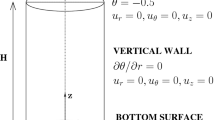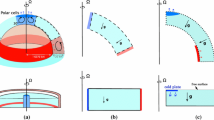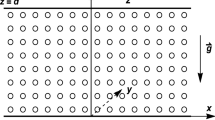Abstract.
In this paper we calculate Lyapunov exponents and adapt a diagnostic tool, originally used for another purpose by Lorenz (1969), to characterize the degree and nature of the chaotic behavior observed in a thermally driven rotating fluid annulus at different points in parameter space as a control parameter (the rotation rate) is varied over a significantly wide range. We also report on our initial progress toward making the annulus experiments more relevant to the behavior of baroclinic waves in Earth's atmosphere. Owing to the existence of a background potential vorticity gradient, baroclinic waves in the atmosphere propagate both meridionally and vertically and are not trapped as they are in conventional annulus experiments. Our approach involves the redesign of such experiments through the application of radiational heating from above to provide a background potential vorticity gradient on which baroclinic waves can travel. These experiments are in their earliest stage of design and implementation. If successful, they promise to provide a new paradigm for future experiments with thermally driven rotating fluids.
Similar content being viewed by others

Author information
Authors and Affiliations
Additional information
Received 26 August 1996 and accepted 5 December 1996
Rights and permissions
About this article
Cite this article
Pfeffer, R., Applequist, S., Kung, R. et al. Progress in Characterizing the Route to Geostrophic Turbulence and Redesigning Thermally Driven Rotating Annulus Experiments . Theoret. Comput. Fluid Dynamics 9, 253–267 (1997). https://doi.org/10.1007/s001620050043
Issue Date:
DOI: https://doi.org/10.1007/s001620050043



